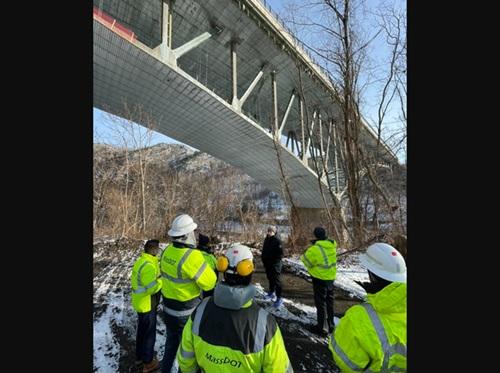The Massachusetts Department of Transportation (MassDOT) has officially approved an enterprising $18.5 billion Capital Investment Plan spanning fiscal years 2026 through 2030. This five-year blueprint outlines critical investments aimed at enhancing the state’s transportation infrastructure, prioritizing projects that support both local communities and statewide connectivity. The newly endorsed plan reflects MassDOT’s commitment to modernizing transit systems, improving safety, and fostering economic growth across Massachusetts [[3]].
Table of Contents
- Massachusetts DOT Unveils Ambitious Infrastructure Investment Targets
- Key Projects and Upgrades Driving Regional Economic Growth
- Funding Strategies and Budget Allocation Breakdown
- Expert Recommendations for Maximizing Plan Effectiveness and Community Impact
- Future Outlook
Massachusetts DOT Unveils Ambitious Infrastructure Investment Targets
The Massachusetts Department of Transportation (DOT) has set forth an unprecedented five-year $18.5 billion capital investment blueprint aimed at transforming the state’s infrastructure landscape. This ambitious plan prioritizes critical projects across transportation networks, emphasizing modernization and sustainability to meet future demands. Key investment areas include upgrading highway systems, expanding public transit capabilities, and enhancing safety measures statewide.
The capital plan outlines several major focus points:
- Thorough bridge and roadway repairs to extend asset lifespans and improve commuter experience.
- Rapid expansion of multimodal transit options to reduce congestion and promote environmental stewardship.
- Technological integration such as smart traffic management systems to optimize flow and safety.
By addressing these priorities, Massachusetts DOT aims to not only boost economic growth but also foster a resilient and adaptive transportation network that supports communities across the Commonwealth for decades to come.
Key Projects and Upgrades Driving Regional Economic Growth
The $18.5 billion capital plan approved by the Massachusetts Department of Transportation marks a transformative investment in the state’s infrastructure, targeting critical projects that underpin both urban and regional economic vitality. Emphasis is placed on modernizing aging transportation corridors, expanding public transit networks, and enhancing freight mobility to bolster supply chains. This strategic allocation will not only improve daily commutes but also attract new businesses and promote lasting growth across the Commonwealth.
Highlighted initiatives include:
- Comprehensive upgrades to major highway arteries to reduce congestion and improve safety
- Expansion of commuter rail lines to increase capacity and accessibility
- Investment in multimodal hubs facilitating seamless transit connections
- Implementation of climate-resilient infrastructure to safeguard economic assets
These projects are anticipated to generate thousands of construction jobs and stimulate ancillary economic activities, reinforcing Massachusetts as a leader in forward-looking, resilient infrastructure growth.
Funding Strategies and Budget Allocation Breakdown
The Massachusetts Department of Transportation’s ambitious $18.5 billion capital plan is underpinned by a diversified funding strategy designed to maximize resources and ensure fiscal responsibility over the next five years. Key funding sources include state transportation funds, federal grants, public-private partnerships, and targeted bond issuances. Emphasis on leveraging federal infrastructure dollars aims to amplify local investments, while innovative financing tools, such as green bonds, will support environmentally sustainable projects. This strategic blend not only secures near-term project delivery but also strengthens the economic resilience of the state’s transportation network.
Budget allocation breakdown reveals a focused investment across multiple critical infrastructure categories, prioritizing modernization and expansion. Road and bridge repairs are allocated approximately 40% of the budget to address aging assets, while public transit enhancements receive nearly 30%, signaling a commitment to reducing congestion and promoting sustainability. The remaining funds are designated for multimodal transit systems, safety improvements, and cutting-edge technology integration. A detailed list of funding allocations includes:
- Road and bridge rehabilitation: 40%
- Public transit modernization: 30%
- Multimodal transportation projects: 15%
- Safety and accessibility upgrades: 10%
- Technology and innovation initiatives: 5%
Expert Recommendations for Maximizing Plan Effectiveness and Community Impact
Leading transportation and urban planning experts emphasize the importance of a strategic, community-centered approach to leverage the full potential of the $18.5 billion capital plan. To ensure maximum effectiveness, they recommend prioritizing transparent stakeholder engagement throughout the project lifecycle. This includes:
- Inclusive public consultations to capture diverse community needs and concerns;
- Partnerships with local governments to align investments with regional development goals;
- Integrating sustainability metrics so projects contribute to long-term environmental resilience;
- Robust data analytics for tracking progress and adapting plans responsively.
Experts also highlight the critical role of innovative technologies and equitable resource distribution in amplifying community impact. They advocate for adopting smart infrastructure solutions that enhance safety and efficiency while ensuring underserved neighborhoods receive targeted improvements. Moreover, consistent performance evaluation paired with flexible funding mechanisms will help the Commonwealth adapt swiftly to shifting priorities and emerging challenges, solidifying Massachusetts’ leadership in progressive transportation development.
Future Outlook
The approval of the $18.5 billion 5-year capital plan marks a notable milestone for Massachusetts, promising to enhance the state’s transportation infrastructure and support economic growth. As the Massachusetts Department of Transportation moves forward with this ambitious agenda, residents and stakeholders alike will be watching closely to see how these investments translate into safer roads, improved transit options, and a more connected Commonwealth. Further updates on project progress and funding allocation are expected in the coming months, underscoring the state’s commitment to modernizing its transportation network for future generations.

